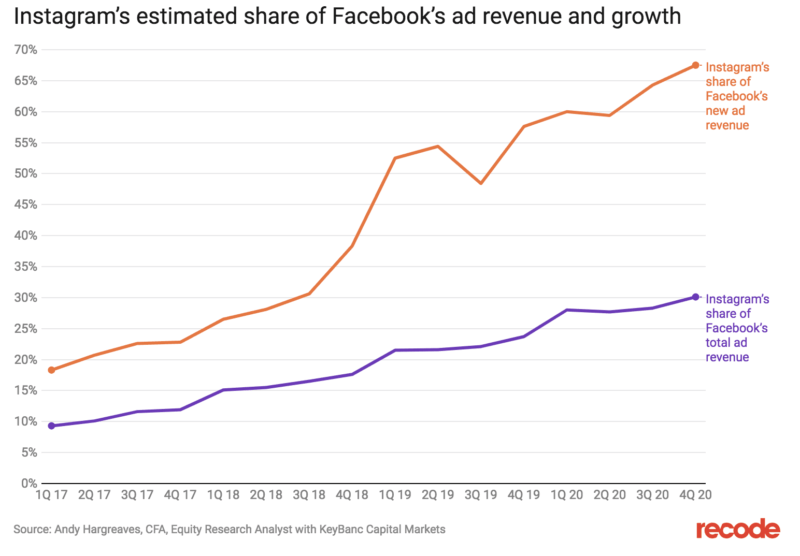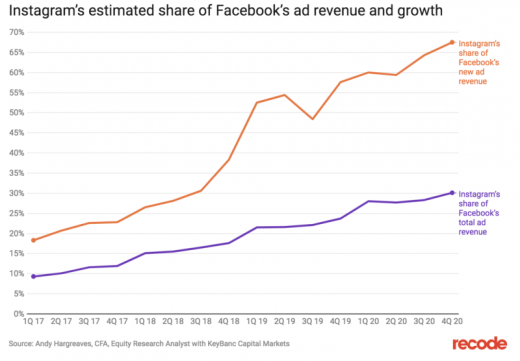Instagram’s e-commerce success is building with Stories
Instagram’s shoppable update for Stories earlier this year and a standalone IG Shopping app in development, it is well positioned to continue its journey into e-commerce.
In addition to the big digital money makers like Amazon, Shopify, eBay and Alibaba, social media platforms have become one of the most effective vehicles for brands to drive e-commerce sales. The thing that kick-started it all? Creators.
The rise of influencer marketing has been sparked not only by the trust that consumers place in their favorite social superstars; findings that show 11 times the ROI of traditional advertising. This has resulted in the number of creator campaigns in 2018 more than doubling when compared to 2017.
Perhaps of the most effective social platforms for influencer marketing is Instagram, which is now being leveraged in roughly 93 percent of campaigns, according to CreatorIQ (my employer). And the top post format on the top platform? Instagram Stories, which have seen utilization grow by 60 percent in the last quarter for creator campaigns.
To put this in perspective, Instagram is currently being leveraged more than twice the second-most leveraged social platform, Facebook. Both Facebook and Twitter influencer marketing campaign volumes have dropped by 20 percent and 10 percent respectively in the last year.
Instagram boom results in advertiser growth
This was a big year for Instagram. Not only did the company surpass the 1 billion monthly active users milestone, but they’ve enjoyed a continued rise in the adoption of Instagram Stories. Although the Stories functionality is strikingly similar to the feature that propelled Snapchat to superstardom, Instagram Stories now boast twice as many daily users as Snapchat’s service. The most promising thing about this feature from a brand perspective? The ability to link out or create shoppable videos.
Stories were the first native post format on Instagram that allowed links to be embedded directly. They also give brands the opportunity to sell products directly within the application, which is one of the big reasons that there are more than 2 million monthly active advertisers on Instagram. Instagram has become one of the premiere platforms for brands to show off their creativity, resulting in 80 percent of users following at least one brand.
Paired with a curated stream of inspiring content no matter the user’s tastes, these features have resulted in Instagram becoming THE up-and-coming powerhouse in Facebook’s product portfolio. In fact, Instagram is expected to account for 70 percent of Facebook’s new revenue by 2020.

How this format is being leveraged
Stories are being leveraged by advertisers excited by the post format’s storytelling potential. When crafting Stories content, it’s essential that advertisers pay special attention to their audience. Banner blindness is commonplace among Instagram users, so authenticity and creativity are key to connecting through content. And the best way to make quality creative for the younger generation… is by leveraging the younger generation.
With most Americans exposed to around 4,000 to 10,000 ads each day, creators are one of the only remaining ways to spark a meaningful connection with consumers. Not only are creators trusted by their audiences, but they are accustomed to the formats of the platform. Instagram Stories provide a 15-second vertical video format that caters to the diminishing attention span of audiences – but they must be leveraged properly to tell an engaging brand story. Digitally-native creators have mastered the art form.
Stories disappear after 24 hours, an integral part of the appeal from a creator perspective. For creators (and the brands leveraging them), maintaining a strong semblance of authenticity is essential — and turning your feed into a wall of advertisements is an easy way to lose that authenticity. For brands, a recent survey showed that 33 percent of respondents said their interest in brands or products grew after seeing them in Stories.
It didn’t take long for Instagram Stories to catch on. They soon became an integral part of users’ daily posting habits; as a result, Instagram started experimenting with native links. The first implementation was the “Swipe Up” feature, which was the first way to link out from Instagram natively within a post (i.e., not through “link in bio”). This has been wildly important for direct response brand advocacy campaigns and publications looking to finally utilize their Instagram social efforts for traffic.
With Instagram releasing its next iteration of shoppable features for Stories earlier this year, it is now easier than ever for users to purchase products without leaving the app. The shoppable functionality gives brands the ability to include shopping bag icon stickers on images of products, which then direct potential customers to additional information on those products.
The next steps for Instagram’s social commerce success
So, Instagram is obviously well positioned to continue its journey into e-commerce but how can the platform ensure that it doesn’t push away consumers with advertising overload? One way is by siloing potentially “intrusive” content. The platform is already in the process of building a standalone app for shopping called IG Shopping, which will let users browse collections of products from merchants they follow and purchase them directly from the app.
With the company already testing the waters with other standalone apps like IGTV and Direct, the build-out for a dedicated shopping platform could prove immensely valuable for brands. If brand dollars eventually migrate over to IG Shopping, creators will most certainly play a role in bringing the customers. The only thing left for the social platform is to figure out how to siphon some of the purchasing power away from e-commerce powerhouses like Amazon and Shopify (which Facebook has already experimented with). If IG Shopping is as easy-to-use as its namesake, its highly-integrated e-commerce offering may give competing services a serious run for their money.
Opinions expressed in this article are those of the guest author and not necessarily Marketing Land. Staff authors are listed here.
Marketing Land – Internet Marketing News, Strategies & Tips
(22)



